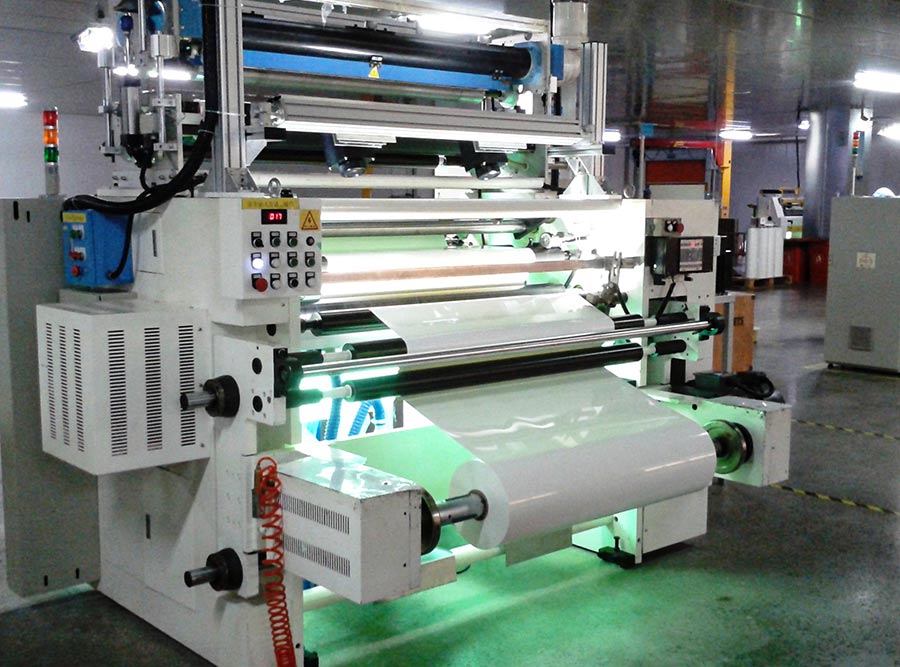
The geometry of the blades in a slitter rewinder machine plays a crucial role in determining the accuracy and precision of the slitting process. The shape, angle, sharpness, and configuration of the blades directly impact the quality of the cuts and the efficiency of the operation. Here’s a detailed look at how blade geometry influences the slitting process:
Blade Angle and Cutting Edge
Cutting Angle: The angle at which the blade cuts through the material, known as the cutting angle, is critical for achieving clean and precise cuts. A sharper cutting angle reduces the force required to slit the material, which helps in maintaining the integrity of the cut edges and minimizes deformation or fraying of the material.
Bevel Angle: The bevel angle of the blade, which is the angle formed by the cutting edge and the blade body, affects the ease of penetration and the quality of the cut. Blades with a lower bevel angle provide sharper cuts and are better suited for soft or thin materials, while those with a higher bevel angle are more durable and suitable for thicker or tougher materials.
Blade Shape and Configuration
Razor Blades: Razor blades have a very fine, sharp edge and are typically used for slitting thin, soft materials such as films and foils. Their geometry allows for minimal material displacement and high precision cuts but may wear out quickly with hard or thick materials.
Shear Blades: Shear blades work in pairs, with one blade acting as the upper blade and the other as the lower blade, like scissors. The precise alignment and the shape of the shear blades are crucial for maintaining consistent cuts and reducing material deformation. They are suitable for thicker and more rigid materials.
Score Blades: Score blades, also known as crush cut blades, have a rounded or V-shaped edge that presses into the material to slit it by crushing rather than cutting. They are effective for materials that are prone to fraying or splitting when cut with a sharp blade.

Blade Sharpness and Edge Maintenance
Sharpness: The sharpness of the blade directly influences the precision of the cut. A sharper blade produces cleaner cuts with less resistance and deformation. Regular maintenance and sharpening are necessary to maintain the blade’s cutting efficiency and to ensure consistent accuracy.
Edge Wear: The rate at which the blade’s edge wears down depends on the material being slit and the geometry of the blade. A well-maintained blade with an optimized geometry for the material type will maintain its sharpness longer and provide more precise cuts.
Blade Thickness and Rigidity
Thickness: Thicker blades provide greater rigidity and are less prone to bending or flexing during the slitting process. This stability is crucial for maintaining precise cuts, especially in high-speed operations or when cutting thicker materials.
Flexibility: Conversely, thinner blades are more flexible and can adapt better to variations in the material thickness and properties, but they may require more frequent adjustments to maintain cutting accuracy.
Blade Alignment and Positioning
Blade Overlap: The overlap between the upper and lower blades in shear slitting determines the cutting action’s precision. Proper overlap ensures a clean cut with minimal material displacement and stress. Incorrect alignment can lead to uneven cuts and increased wear on the blades.
Blade Gap: The distance between the cutting edges of the blades, known as the blade gap, is critical for achieving precise cuts. An optimal blade gap minimizes material compression and ensures that the cut is clean and accurate. Adjustments to the gap must be precise to match the material’s thickness and properties.
Blade Geometry and Material Compatibility
Material Type: The geometry of the blade must be compatible with the material being slit. For example, thin, sharp blades are ideal for slitting delicate materials like paper or plastic films, while thicker, more robust blades are necessary for cutting tougher materials like metals or textiles.
Material Properties: Factors such as the material’s tensile strength, elasticity, and thickness influence the choice of blade geometry. Blades designed for high-tensile materials may require a steeper angle and a more robust edge to handle the increased cutting forces.